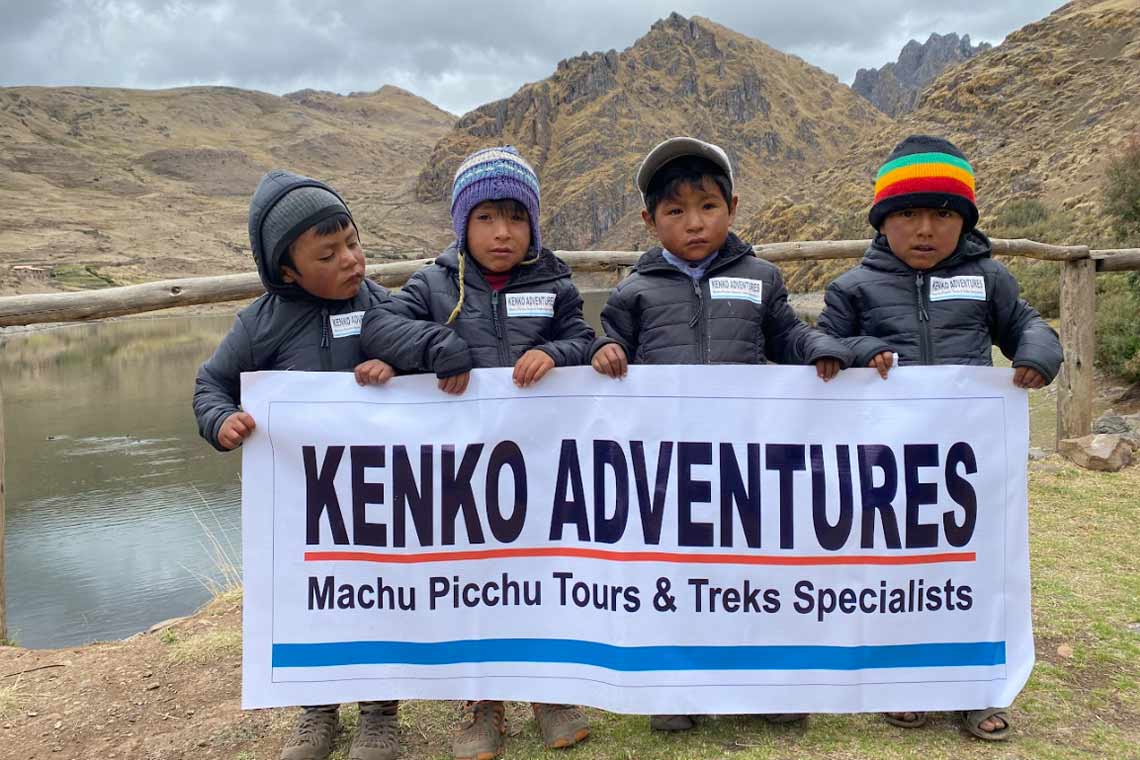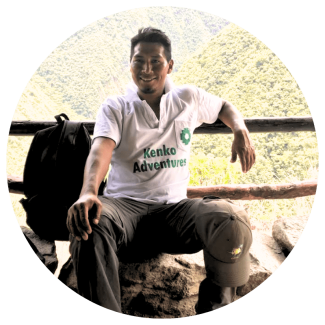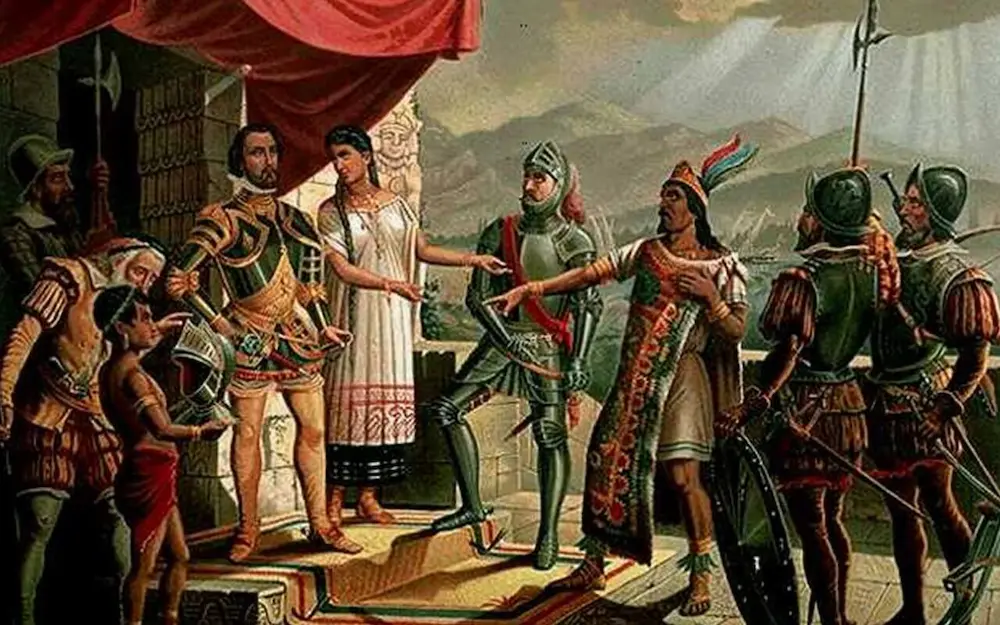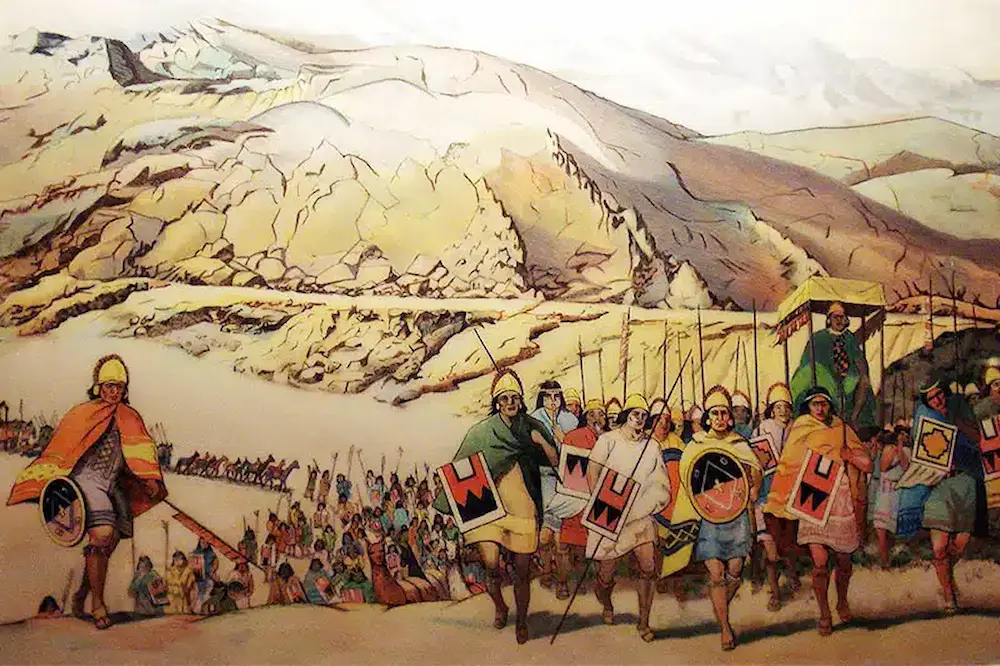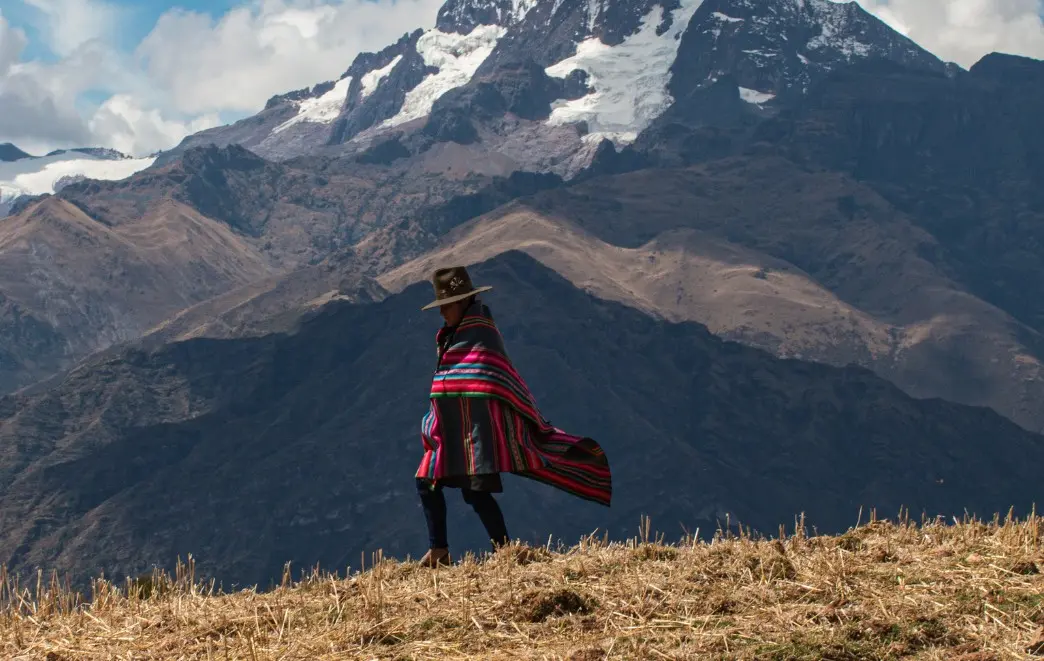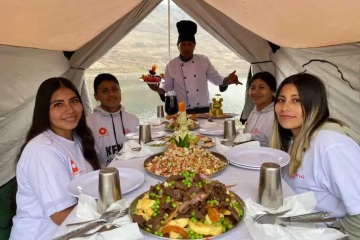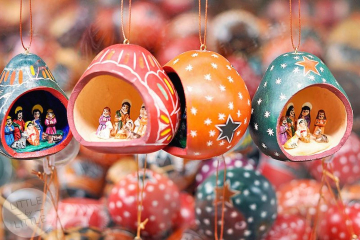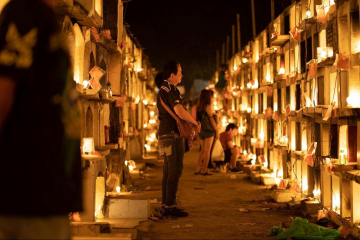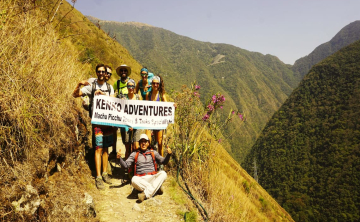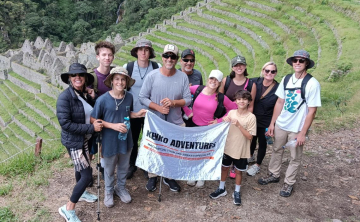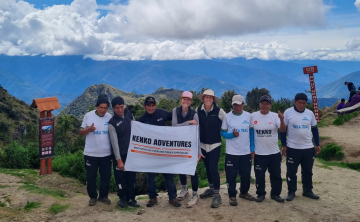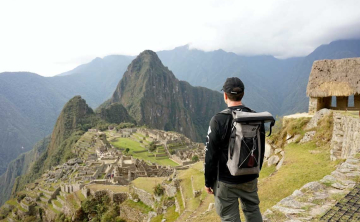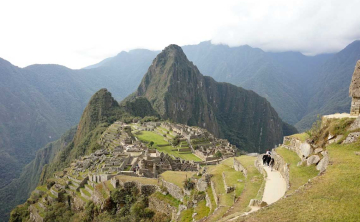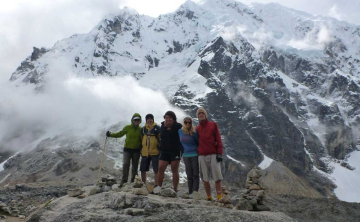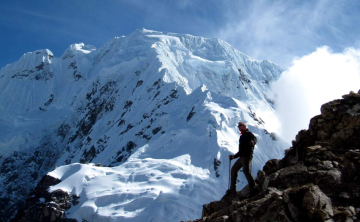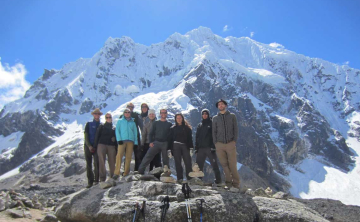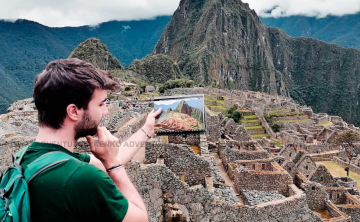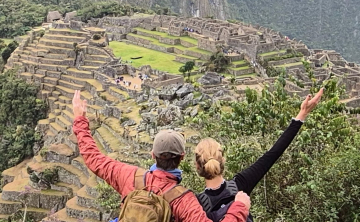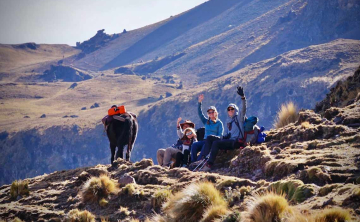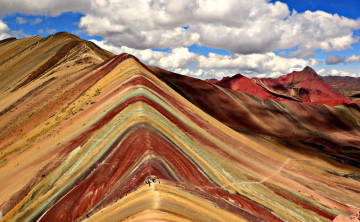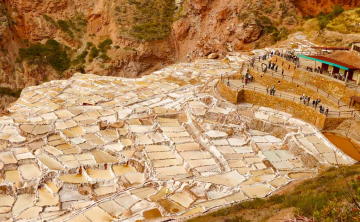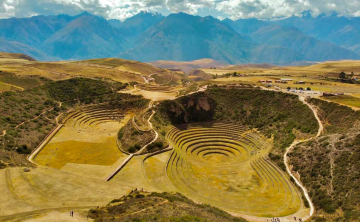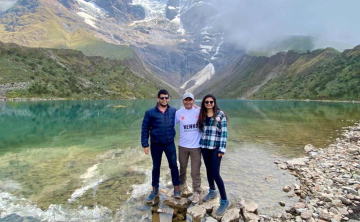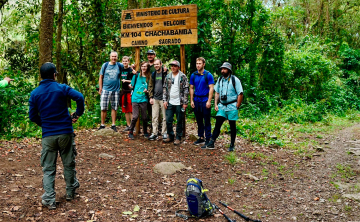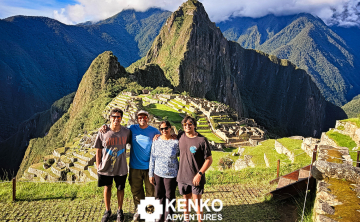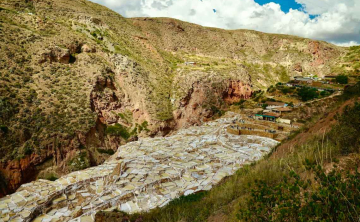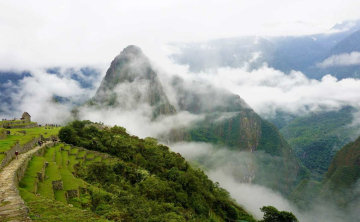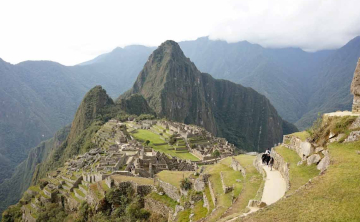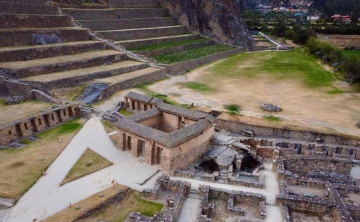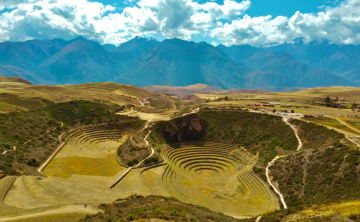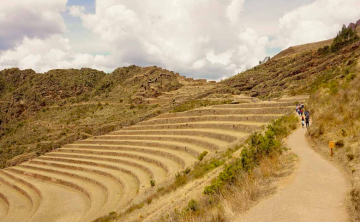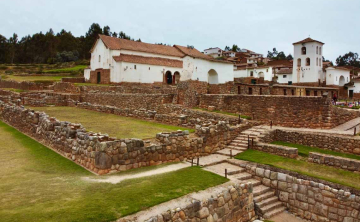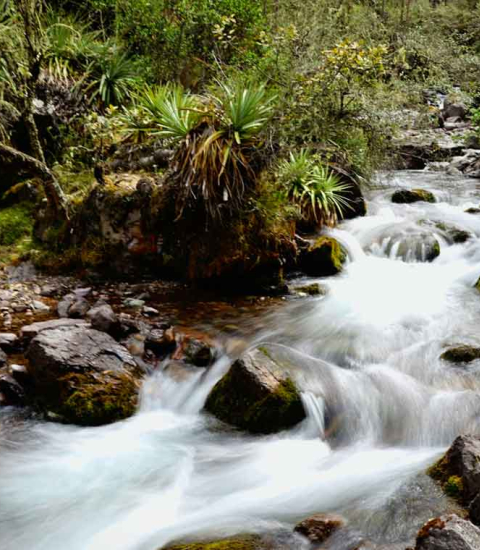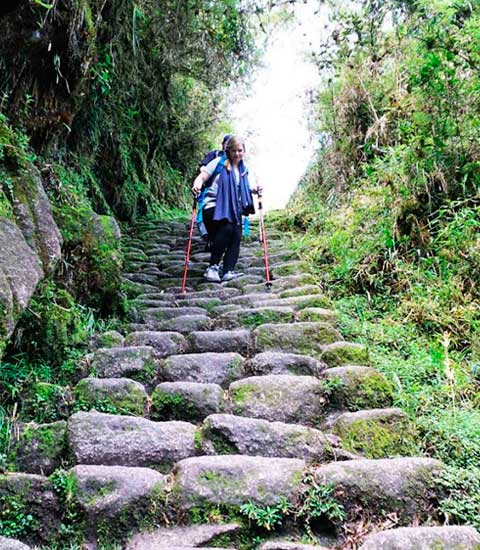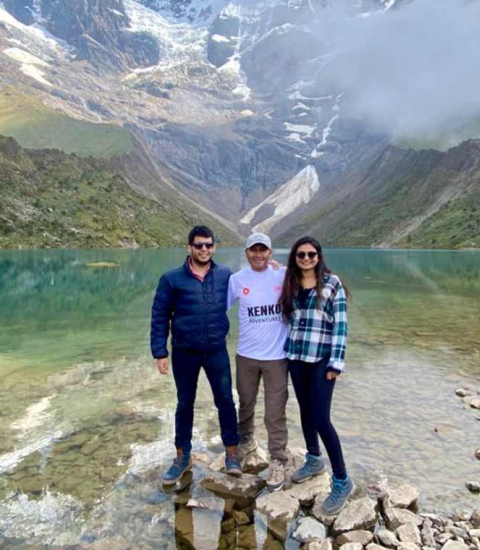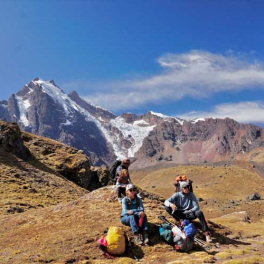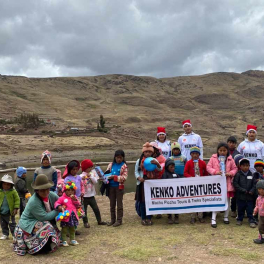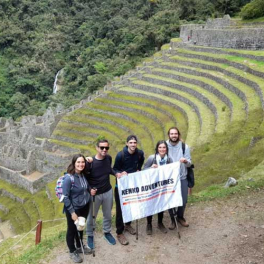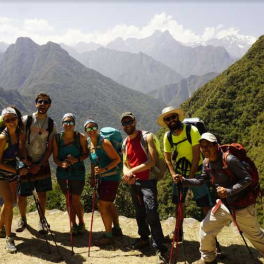As experts in trekking, we are aware of how taxing the trails can be, particularly if you are not accustomed to lengthy climbs or have not adequately refueled in the days prior to your journey. In order to keep you hydrated, energized, and strong till the very end of your adventure, we've incl ...
Spanish conquest of the Inca Empire
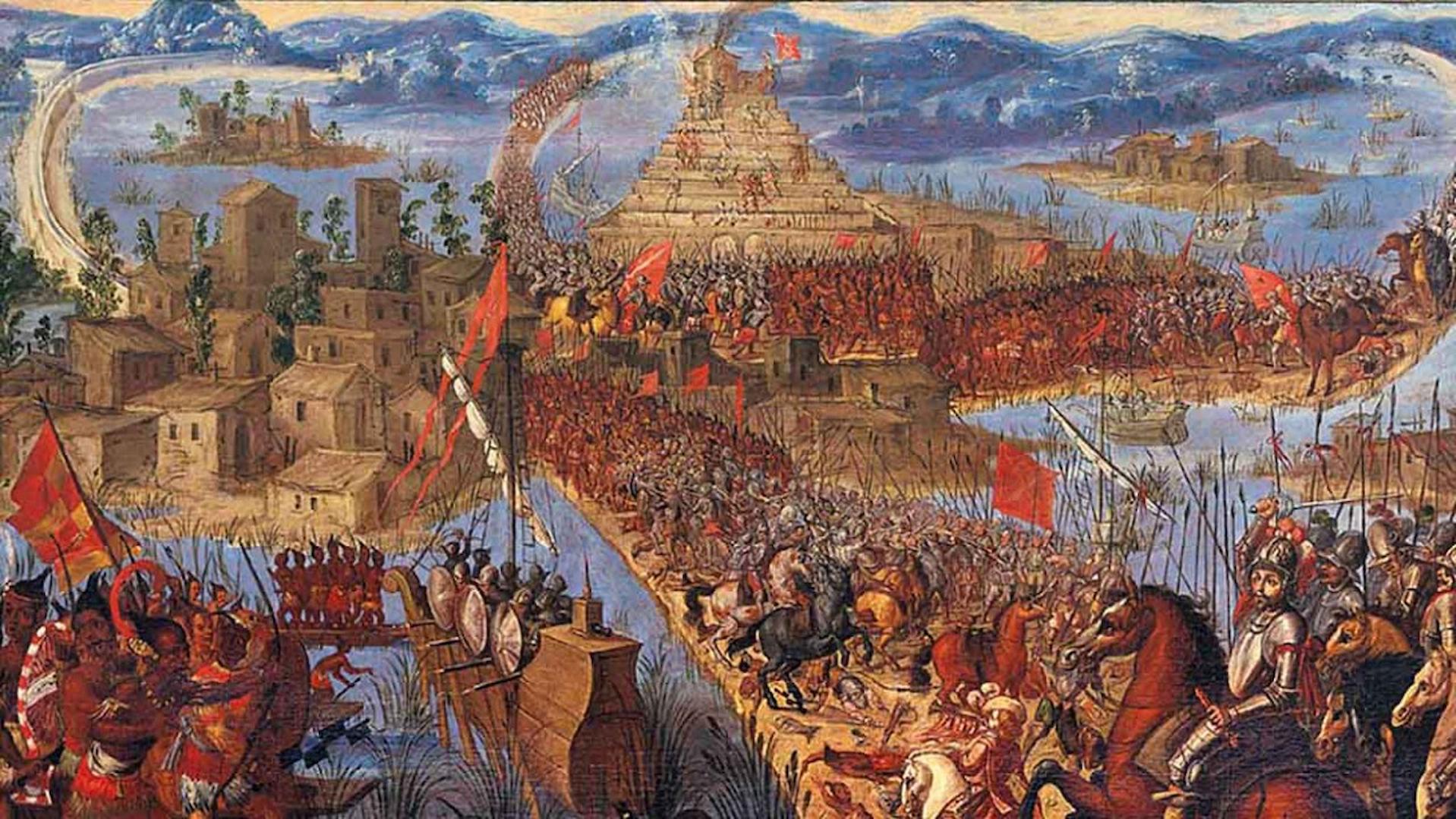
Would you be able to walk the same routes as the Incas did over 500 years ago? Or learning the secrets of an empire that continues to influence the culture, landscapes, and daily lives of millions of Peruvians even after the Spanish conquest of the Inca Empire arrived?
This blog is more than simply a history guide; it's an invitation to get a behind-the-scenes look at the Inca Empire and learn how its accomplishments, tenacity, and legacy continue to influence Peru today. Discover what history books don't always tell you here, from the mysteries of the conquest to the best-kept secrets of Machu Picchu, and how you can get a unique look at one of the most interesting civilizations in the world.
If you've ever dreamed of walking among ruins, feeling the spirituality of the Andes, and understanding the true story behind the Incas, this blog is your gateway. You won't just learn history: you'll experience the Inca legacy like never before.
The end of an era: Francisco Pizarro and Atahualpa
In 1532, the Spanish conquistador Francisco Pizarro arrived in the heart of the Inca Empire, driven by tales of unimaginable wealth and the promise of new territories for the Spanish crown. Atahualpa, the reigning emperor, was at the peak of his power after a bitter civil war with his brother Huáscar. Despite the recent turmoil, he initially welcomed the Spanish without suspecting their true intentions, seeing them as potential allies or emissaries rather than a threat.
Pizarro, however, exploited this trust with calculated precision. During a seemingly diplomatic meeting in Cajamarca, he ambushed and captured Atahualpa, holding him for a ransom of gold and silver—a demand that shook the very foundations of the empire. The Inca people gathered immense treasures to secure the emperor’s release, yet once the ransom was delivered, the Spaniards executed Atahualpa. This brutal act not only ended the life of a revered leader but also signaled the beginning of the Inca Empire’s rapid decline. With the emperor gone, centralized authority crumbled, paving the way for Spanish consolidation and the imposition of foreign rule.
The psychological impact was equally devastating. The once-mighty empire, which had stretched across the Andes with a sophisticated administrative system, found itself leaderless, vulnerable, and demoralized. Communities, uncertain whom to follow, faced growing instability, while the Spanish began systematically imposing their control over key regions, dismantling the infrastructure that had sustained the Inca for centuries.
Today, travelers can tread the same lands where the Incas once thrived. Immersive journeys like the Salkantay Trek trace paths through breathtaking Andean landscapes, once integrated into the Inca road network. Walking these trails offers more than scenic beauty—it is an encounter with history itself, a way to connect tangibly with the enduring legacy of a civilization that, even after conquest, continues to inspire and captivate the world.
You might also want to check out: The mita system and mita obligations
Life in the Inca Empire during the conquest
The arrival of the Spanish conquest of the Inca Empire into a state of profound uncertainty and fear. Already weakened by the civil war between Atahualpa and Huáscar, the empire faced internal divisions that eroded trust and loyalty among local communities. Administrative, political, and agricultural systems—once highly organized and remarkably efficient—began to falter, leaving regions isolated and vulnerable. Farmers struggled to maintain terraces and irrigation systems, while local leaders wrestled with shifting allegiances in a rapidly changing political landscape.
Spiritually, the upheaval was devastating. Atahualpa, regarded as the divine son of Inti, the sun god, had been executed in front of a population that revered him as both political and spiritual authority. Temples were looted, sacred idols destroyed, and centuries-old rituals interrupted, leaving communities in shock. Christian missionaries arrived, bringing new gods, new rituals, and foreign laws, forcing indigenous people to navigate a spiritual landscape that contradicted the beliefs and practices they had known all their lives.
In this environment of fear and uncertainty, families and communities struggled to preserve their traditions in secret. Oral histories, rituals, and ancestral knowledge became acts of quiet resistance. Even as the empire’s political structures crumbled, the cultural essence of the Incas endured, safeguarded by those unwilling to surrender their heritage entirely.
The Spanish conquest of the Inca Empire was not only a military victory but also a profound cultural and spiritual disruption. It was a period marked by violence, loss, and adaptation—but also by the resilience of a people determined to preserve their identity against overwhelming odds.
Survival amid chaos: Resistance and continuity
Despite the widespread social fragmentation following the capture of Atahualpa, many Inca communities refused to surrender completely to Spanish rule. In some regions, people organized open rebellions, such as those led by Manco Inca in Vilcabamba, attempting to reclaim autonomy and defend their territories. In other areas, communities retreated to remote highlands, deep valleys, and forested regions, seeking safety from both Spanish forces and the political chaos that had engulfed the empire.
European diseases, however, became a relentless and invisible adversary. Smallpox, measles, and influenza swept across the Andes, decimating populations who had no immunity to these new illnesses. Entire villages were wiped out, leaving survivors struggling to maintain agricultural production, communal structures, and cultural practices. The dual pressures of military conquest and disease-induced mortality created a nearly insurmountable challenge for the Inca people, yet even amid these tragedies, resilience persisted.
Cultural and spiritual traditions did not vanish. Quechua, the language of the Inca, remained a unifying force, passed down orally from generation to generation. Ancestral rituals, weaving techniques, pottery, and agricultural knowledge were carefully preserved, often practiced in secret to avoid suppression by colonial authorities. These acts of quiet resistance ensured that the essence of Inca civilization endured, embedding itself deeply in the cultural fabric of Peru. Today, the echoes of these practices are still visible in festivals, local governance, traditional farming, and daily life across the Andes.
You might also want to check out: A guide to hiking to the Sun Gate (Inti Punku)
The impact of disease on the Empire
The arrival of Europeans introduced biological threats that the Inca had never encountered. Diseases such as smallpox, influenza, and measles spread with shocking speed, ravaging entire populations. Emperor Huayna Capac, who had ruled a vast and prosperous empire, succumbed to smallpox in 1527, triggering a succession crisis that erupted into civil war between his sons Atahualpa and Huáscar. This conflict drained resources, fragmented loyalties, and left the empire politically unstable at the very moment the Spanish arrived.
The demographic collapse also had profound economic and social consequences. Agricultural systems, which relied on the careful coordination of terrace farming and irrigation, were disrupted. Trade networks that connected the empire’s diverse ecological zones faltered. The mit’a system, a form of mandatory communal labor essential for infrastructure, food production, and the upkeep of roads, temples, and storage facilities, collapsed under the weight of population loss and social disruption.
Despite these catastrophic effects, the Andean people adapted. They innovated in agriculture, consolidated communities in safer regions, and maintained spiritual and cultural practices in ways that were less visible to colonial authorities. The survival and adaptation of Inca knowledge and traditions amid disease and conquest highlight the remarkable resilience of a civilization that, even in crisis, managed to leave an enduring legacy.
Indigenous allies: The other side of Conquest
The Spanish did not conquer the Inca Empire in isolation. Several indigenous groups, who had long-standing grievances against Inca rule, allied with the Spaniards, seeing an opportunity to shift the balance of power. Groups such as the Chancas, Q’ro, and Cañaris provided essential support, offering guides familiar with the rugged Andean terrain, intelligence about Inca fortifications, and warriors who augmented Spanish conquest of the Inca Empire forces. These alliances proved decisive, allowing a relatively small contingent of Spaniards to advance rapidly and establish control over key regions.
However, these collaborations came at a cost. While initially strategic, they ultimately led many indigenous communities into new forms of exploitation under Spanish colonial authority, as promises of autonomy were often broken. Today, travelers exploring sites like Machu Picchu, Ollantaytambo, or the terraces of Pisac can witness both the engineering brilliance of the Incas and gain insight into the complex web of alliances, betrayals, and negotiations that shaped the conquest.
The Inca Empire at the dawn of the 16th century
Before the arrival of the Spanish, the Inca Empire represented one of the most sophisticated civilizations in the Americas. Spanning from present-day Ecuador in the north to central Chile and northwest Argentina in the south, the empire was unified under a centralized government based in Cusco, the legendary “navel of the world.” Administrative divisions, or suyos, allowed effective governance across this immense territory, with officials overseeing agriculture, taxation, labor, and justice, all reporting directly to the Sapa Inca.
Technologically, the Incas excelled in agriculture, engineering, and urban planning. Terraces carved into steep mountainsides and advanced irrigation systems maximized arable land in the Andes. Staple crops like potatoes, maize, and quinoa fed the population, while llamas and alpacas provided transport, wool, and protein. The Qhapaq Ñan, the empire’s extensive road network, connected distant regions, enabling rapid movement of armies, messengers, and goods, and serving as the backbone of a vast and efficient empire.
Aftermath: Resistance, survival, and legacy
The collapse of the Inca political structure did not erase the identity of its people. Resistance continued in remote highland communities, where leaders maintained social organization and preserved cultural traditions in defiance of colonial imposition. The late 18th-century rebellion led by TĂşpac Amaru II stands as a powerful symbol of indigenous resilience and the enduring struggle for justice against oppression.
Even under colonial rule, Inca cultural practices survived and adapted. Agricultural knowledge, terrace farming, and irrigation techniques continued to feed communities. Weaving patterns, pottery designs, and ceremonial rituals preserved ancestral knowledge and spiritual identity. The Quechua language, still widely spoken, became a vessel for oral history and community cohesion. Over time, Spanish influence blended with these traditions, creating the rich, hybrid cultural tapestry that defines Peru today. Visitors to Andean villages, local festivals, and archaeological sites can trace these threads of continuity, witnessing a civilization whose legacy is far from extinguished.
You might also want to check out: The Inca Culture History
Experiencing the Inca legacy today
Modern travelers have the extraordinary opportunity to experience the legacy of the Incas firsthand. Iconic destinations such as Machu Picchu, Choquequirao, Ollantaytambo, and the Sacred Valley serve as living testaments to the ingenuity and resilience of this remarkable civilization. Walking along ancient stone roads, marveling at terraces carved into steep mountainsides, and exploring ceremonial centers offers a tangible connection to a society that mastered agriculture, architecture, and engineering long before European contact.
What makes this experience truly transformative is the opportunity to interact with local communities that continue to preserve ancestral traditions. Visitors can witness weaving techniques passed down for generations, participate in agricultural rituals still practiced in highland villages, and hear oral histories in Quechua, the language of the Incas. This immersion allows travelers not just to observe history but to feel the enduring spirit of a civilization that survived conquest and upheaval.
For those seeking a deeper adventure, combining treks like the Inca Trail, Salkantay Trek, or Inca Jungle Trail with cultural excursions provides a holistic journey through both natural landscapes and centuries of history. Each step along these trails echoes the footsteps of the Inca messengers and traders who once traversed these mountains, bridging the past with the present in a profound way.
Spanish conquest and Peru’s unique cultural blend
The arrival of the Spanish marked a dramatic shift in the social, political, and cultural landscape of Peru. Conquest brought European language, religion, architecture, and customs, which fused with Andean traditions to create the vibrant and unique heritage Peruans celebrate today. Festivals, music, and dance—such as Inti Raymi and regional folk celebrations—reflect this rich synthesis of indigenous and European influences.
The Spanish also introduced new crops, livestock, and agricultural techniques, including wheat, sugarcane, and irrigation methods that transformed the Andean economy and altered centuries-old farming practices. While colonization imposed new social hierarchies, it also facilitated the blending of cultures, producing a hybrid identity that persists in Peru’s cuisine, clothing, and community life.
Frequently Asked Questions (FAQs) about the Spanish Conquest of the Inca Empire
The Spanish conquest of the Inca Empire is one of the most dramatic and transformative events in South American history. Its impact reshaped societies, cultures, and economies in ways that are still felt today. In this section, we answer some of the most common questions about the conquest, helping you understand not just the events themselves, but the motivations, consequences, and lasting legacy of this pivotal moment in history.
1. Who was Francisco Pizarro and why did he conquer the Inca Empire?
Francisco Pizarro was a Spanish conquistador motivated by tales of immense wealth in gold and silver. He led an expedition to the heart of the Inca Empire in 1532, taking advantage of internal conflicts, political instability, and the empire’s lack of immunity to European diseases to capture and ultimately execute Emperor Atahualpa. His conquest opened the door for Spanish colonization across the Andes.
2. How did the Spanish manage to defeat such a vast empire?
Despite the Inca Empire’s size and advanced organization, the Spaniards exploited internal divisions, such as the civil war between Atahualpa and Huáscar, and formed alliances with indigenous groups dissatisfied with Inca rule. Superior weaponry, cavalry, and the devastating impact of European diseases like smallpox also gave the Spaniards a decisive advantage.
3. What happened to Emperor Atahualpa?
Atahualpa was captured during a meeting with Pizarro and held for ransom. The Incas paid enormous amounts of gold and silver for his release, but the Spaniards executed him regardless, marking a turning point in the conquest and symbolizing the collapse of centralized Inca authority.
4. Did all indigenous people resist the Spanish?
Not all indigenous groups resisted. While some communities fought fiercely or retreated to remote highlands, others allied with the Spaniards, such as the Chancas, Q’ro, and Cañaris, seeking to challenge Inca dominance. These alliances were crucial for the Spanish victory but often led to long-term exploitation under colonial rule.
5. How did the conquest impact Inca culture and society?
The conquest brought profound changes: temples were looted, rituals interrupted, and sacred objects destroyed. However, many traditions survived in secret—Quechua language, agricultural techniques, weaving patterns, and festivals were preserved and adapted, blending with Spanish influences to form Peru’s unique cultural identity.
6. Why is the Spanish conquest of the Inca Empire important to study today?
Studying the conquest helps us understand the dramatic shifts in power, culture, and society that shaped South America. It reveals how resilience, adaptation, and cultural preservation can endure even after profound upheaval, and it allows travelers and historians to appreciate the living legacy of the Inca Empire in modern Peru.
How the Spanish conquest of the Inca Empire changed history
One of the most significant turning points in the history of South America was the Spanish conquest of the Inca Empire, which marked the beginning of a new cultural era and put an end to one of the most developed civilizations on the continent. Travelers can trace the course of history and observe the tenacity of the Inca people in the face of extreme upheaval by visiting ancient sites such as Machu Picchu, Sacsayhuamán, and Qoricancha. Tours that combine Machu Picchu, the Inca Trail, and Choquequirao combine adventure and cultural immersion for a unique experience. Experience the living legacy of a civilization that still defines Peru's identity, traversing highland landscapes, visiting sacred monuments, and interacting with people who preserve Inca traditions.
Trekking to Machu Picchu, the Inca Trail, and a visit to Choquequirao are now more than just tourist destinations; they offer the opportunity to fully immerse yourself in millennia of history and witness the majesty and perseverance of a people whose legacy endures. History is experienced both by living it and by reading it, as every action, scene, and ritual reminds us. If you want to truly understand how an empire can transcend time and leave an indelible mark on a country's identity, now is the time to immerse yourself in the Inca heritage and discover it for yourself.
More blog articles
Christmas traditions in Peru customs are very unique. Every December, the entire nation is transformed into a living mosaic of devotion, lights, and scents that is unmatched throughout the year. It seems like a bygone era, filled with customs that our parents and grandparents instilled in us a ...
Peruvians' ability to recognize death while celebrating life is demonstrated by the country's Day of the Dead. Every year on November 1st and 2nd, cemeteries all throughout the nation are transformed into poignant locations for family reunions when it seems impossible to tell this world from t ...
Why Kenko Adventures?
We present our real culture life to our clients, hiring people from villages and communities of our region.
We offer unique services like: hot shower and private toilets on treks. We have a real responsibility taking care of our planet.
Experts on: Inca Trail hikes and Machu Picchu Hiking Tours. We operate small groups.
Superior Quality services and full flexibility for any changes in this pandemic
Free warm jacket for my litle friend!
Kenko Adventure Peru founder decided to add a social proyect in all Our tours that means, if you are booking a tour with Us, you automatically are donating a warm jacket for Our litle kids that have very hard living in very cold conditions near by the Andes Mountain
